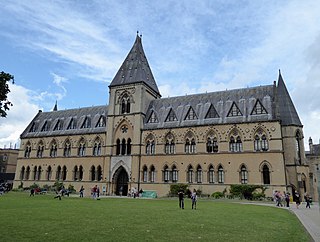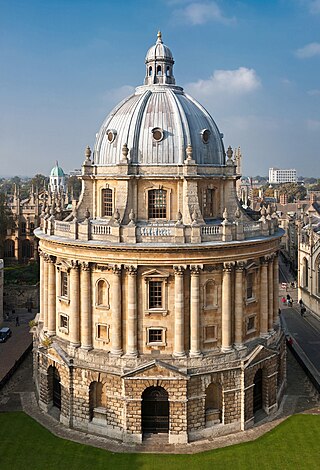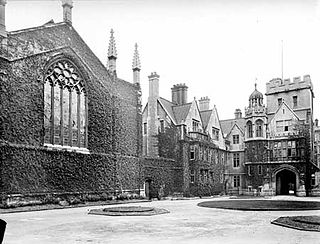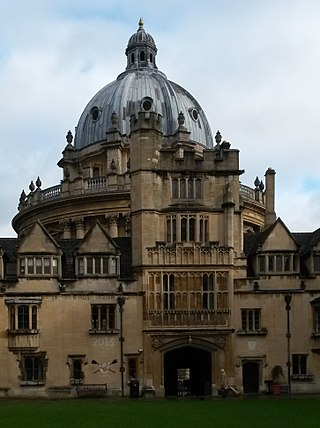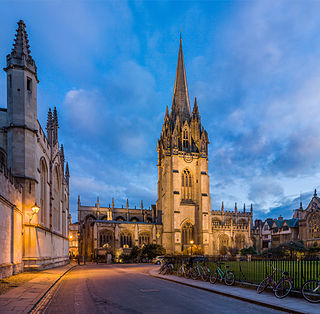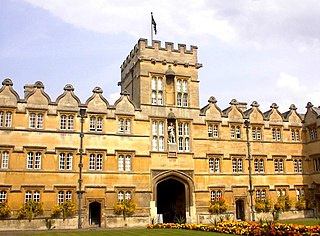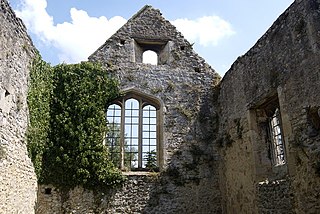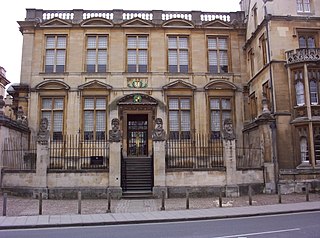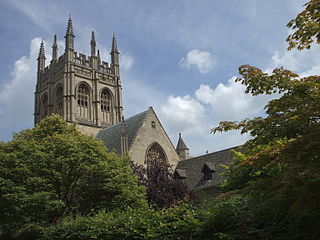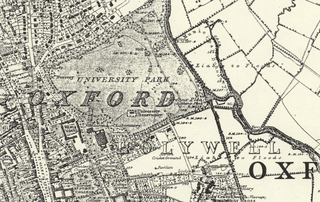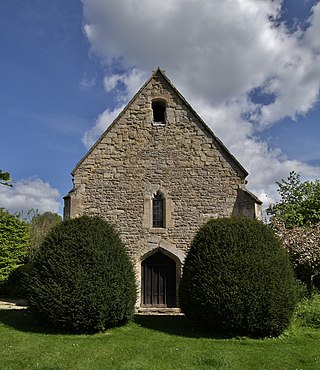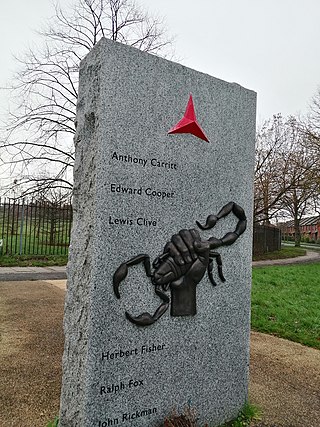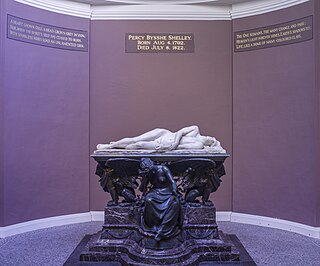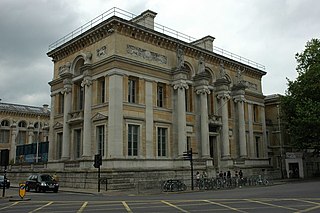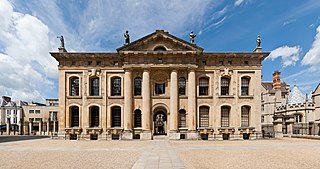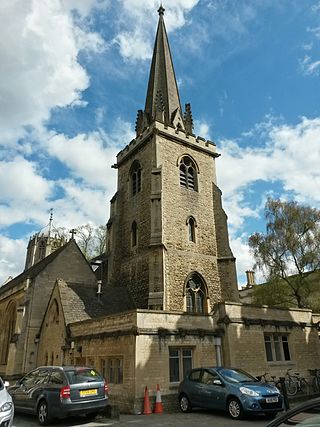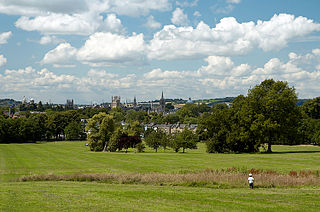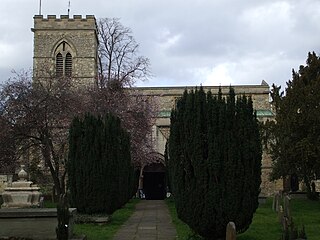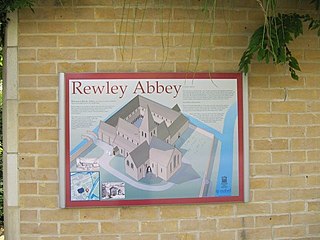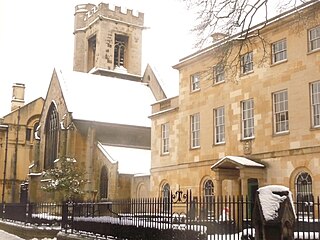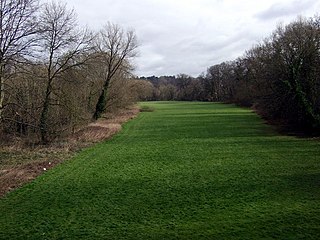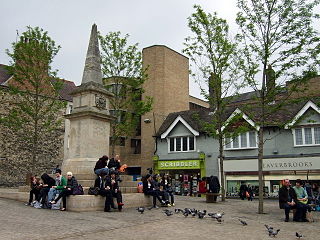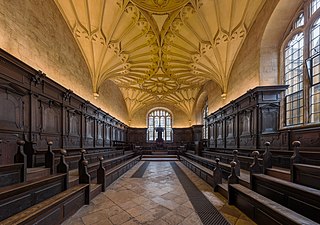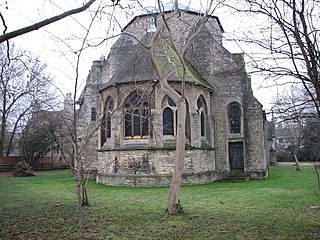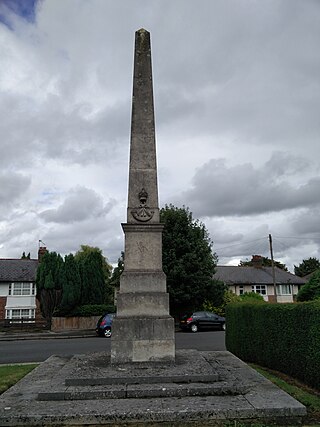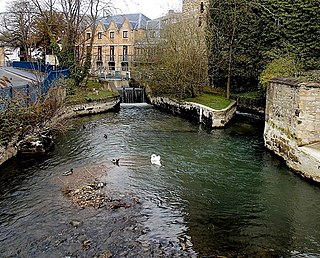41 Sights in Oxford, United Kingdom (with Map and Images)
Legend
Welcome to your journey through the most beautiful sights in Oxford, United Kingdom! Whether you want to discover the city's historical treasures or experience its modern highlights, you'll find everything your heart desires here. Be inspired by our selection and plan your unforgettable adventure in Oxford. Dive into the diversity of this fascinating city and discover everything it has to offer.
Sightseeing Tours in OxfordActivities in Oxford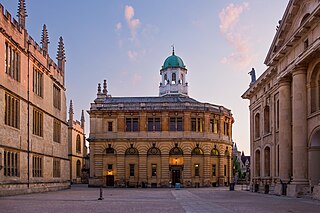
The Sheldonian Theatre, in the centre of Oxford, England, was built from 1664 to 1669 after a design by Christopher Wren for the University of Oxford. The building is named after Gilbert Sheldon, Warden of All Souls College and later chancellor of the University. Sheldon was the project's main financial backer. The theatre is used for music concerts, lectures and University ceremonies, but not for drama until 2015 when the Christ Church Dramatic Society staged a production of The Crucible by Arthur Miller.
The Oxford University Museum of Natural History (OUMNH) is a museum displaying many of the University of Oxford's natural history specimens, located on Parks Road in Oxford, England. It also contains a lecture theatre which is used by the university's chemistry, zoology and mathematics departments. The museum provides the only public access into the adjoining Pitt Rivers Museum.
Wikipedia: Oxford University Museum of Natural History (EN), Url
The Radcliffe Camera is a building of the University of Oxford, England, designed by James Gibbs in a Baroque style and built in 1737–49 to house the Radcliffe Science Library. It is sited to the south of the Old Bodleian, north of the Church of St Mary the Virgin, and between Brasenose College to the west and All Souls College to the east. The Radcliffe Camera's circularity, its position in the heart of Oxford, and its separation from other buildings make it the focal point of the University of Oxford, and as such it is almost always included in shorthand visual representations of the university. The Radcliffe Camera is not open to the public.
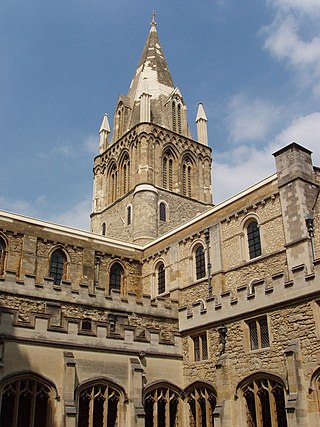
Christ Church Cathedral is a cathedral of the Church of England in Oxford, England. It is the seat of the bishop of Oxford and the principal church of the diocese of Oxford. It is also the chapel of Christ Church, a college of the University of Oxford; this dual role is unique in the Church of England. It is administered by the dean of Christ Church, who is also the head of the college, and a governing body.
Wikipedia: Christ Church Cathedral, Oxford (EN), Website, Heritage Website
The Chapel of Brasenose College, Oxford, dedicated to St Hugh and St Chad, was built during the seventeenth century, during Brasenose's second wave of building started under the Principalship of Samuel Radcliffe. It is believed to have replaced an earlier chapel where the Senior Common Room now is, and includes items of silverware from around the date of foundation. The chapel is in a mixture of architectural styles – Gothic, neoclassical, and baroque – and has not proven uncontroversial for this reason. The current chaplain is The Reverend David Sheen.
Somerville College Chapel is the chapel of Somerville College, Oxford. The chapel is unique among Oxford colleges because it has no religious affiliation - reflecting the non-sectarian foundation of the college as place for the higher education of women. It can be seen as both a manifestation of the aspirations of liberal Christianity in the interwar years, including the advancement of women and ecumenism, and of the contestation of the role of religion in higher education among elites in the same period.
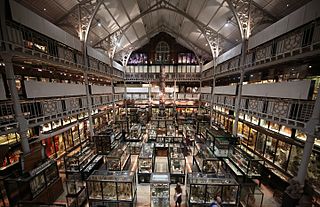
Pitt Rivers Museum is a museum displaying the archaeological and anthropological collections of the University of Oxford in England. The museum is located to the east of the Oxford University Museum of Natural History, and can only be accessed through that building.
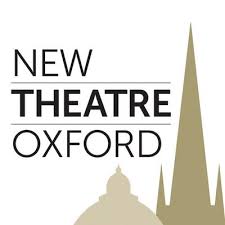
New Theatre Oxford is the main commercial theatre in Oxford, England. It has a capacity of 1,785 people; is on George Street, in the centre of the city; and puts on a wide variety of shows, including musical theatre, stand-up comedy, and concerts.
The Divinity School is a medieval building and room in the Perpendicular style in Oxford, England, part of the University of Oxford. Built between 1427 and 1483, it is the oldest surviving purpose-built building for university use, specifically for lectures, oral exams and discussions on theology. It is no longer used for this purpose, although Oxford does offer degrees in Theology and Religion taught by its Faculty of Theology and Religion.
Brasenose College (BNC) is one of the constituent colleges of the University of Oxford in the United Kingdom. It began as Brasenose Hall in the 13th century, before being founded as a college in 1509. The library and chapel were added in the mid-17th century and the new quadrangle in the late 19th and early 20th centuries.
The University Church of St Mary the Virgin is an Anglican church in Oxford situated on the north side of the High Street. It is the centre from which the University of Oxford grew and its parish consists almost exclusively of university and college buildings.
12. University College
University College, formally The Master and Fellows of the College of the Great Hall of the University commonly called University College in the University of Oxford and colloquially referred to as "Univ", is a constituent college of the University of Oxford in England. It has a claim to being the oldest college of the university, having been founded in 1249 by William of Durham.
13. Worcester College
Worcester College is one of the constituent colleges of the University of Oxford in England. The college was founded in 1714 by the benefaction of Sir Thomas Cookes, 2nd Baronet (1648–1701) of Norgrove, Worcestershire, whose coat of arms was adopted by the college. Its predecessor, Gloucester College, had been an institution of learning on the same site since the late 13th century until the Dissolution of the Monasteries in 1539. Founded as a men's college, Worcester has been coeducational since 1979. The provost is David Isaac, CBE who took office on 1 July 2021.
14. Rhodes House
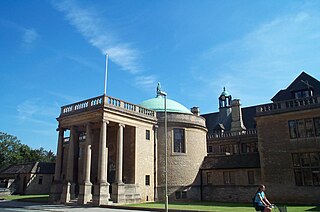
Rhodes House is a building part of the University of Oxford in England. It is located on South Parks Road in central Oxford, and was built in memory of Cecil Rhodes, an alumnus of the university and a major benefactor. It is listed Grade II* on the National Heritage List for England.
15. Godstow Abbey
Godstow is a hamlet about 2.5 miles (4 km) northwest of the centre of Oxford. It lies on the banks of the River Thames between the villages of Wolvercote to the east and Wytham to the west. The ruins of Godstow Abbey, also known as Godstow Nunnery, are here. A bridge spans the Thames and the Trout Inn is at the foot of the bridge across the river from the abbey ruins. There is also a weir and Godstow lock.
16. St Ebbe's Church
St Ebbe's is a Church of England parish church in central Oxford, named for the seventh-century abbess Æbbe of Coldingham. The church is within the conservative evangelical tradition and participates in the Anglican Reform movement. It has members from many nations, many of whom are students at Oxford University. The rector is Vaughan Roberts who is also an author and conference speaker.
17. The Oxford Oratory

The Oxford Oratory Church of St Aloysius Gonzaga is the Catholic parish church for the centre of Oxford, England. It is located at 25 Woodstock Road, next to Somerville College. The church is served by the Congregation of the Oratory.
18. Martyrs' Memorial
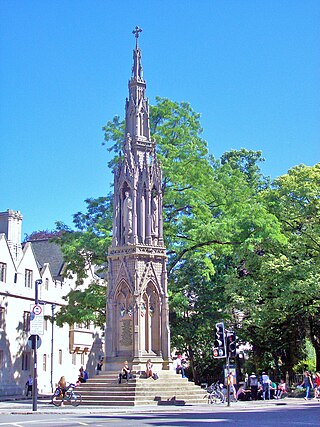
The Martyrs' Memorial is a stone monument positioned at the intersection of St Giles', Magdalen Street and Beaumont Street, to the west of Balliol College, Oxford, England. It commemorates the 16th-century Oxford Martyrs.
19. Museum of the History of Science
The History of Science Museum in Broad Street, Oxford, England, holds a leading collection of scientific instruments from Middle Ages to the 19th century. The museum building is also known as the Old Ashmolean Building to distinguish it from the newer Ashmolean Museum building completed in 1894. The museum was built in 1683, and it is the world's oldest surviving purpose-built museum.
Wikipedia: History of Science Museum, Oxford (EN), Website, Twitter, Facebook, Instagram, Youtube
20. Merton College Chapel
Merton College Chapel is the church of Merton College, Oxford, England. Dedicated to St Mary and St John the Baptist, the chapel was largely completed in its present form by the end of the 13th century. The building retains a number of original stained glass windows, and is noted for its acoustics. A choral foundation was established in 2008 by Peter Phillips.
21. St Michael at the Northgate
St Michael at the North Gate is a church in Cornmarket Street, at the junction with Ship Street, in central Oxford, England. The name derives from the church's location on the site of the north gate of Oxford when it was surrounded by a city wall.
22. Parson's Pleasure
Parson's Pleasure in the University Parks at Oxford, England, was a secluded area for male-only nude bathing on the River Cherwell. It was located next to the path on the way to Mesopotamia at the south-east corner of the Parks. The facility closed in 1991 and the area now forms part of the Parks.
23. St Bartholomew's Chapel
St Bartholomew's Chapel, or Bartlemas Chapel, is a small, early-14th-century chapel, built as part of a leper hospital in Oxford, England. Founded in the early 12th century by Henry I, for twelve sick persons and a chaplain, it was granted to Oriel College by Edward III in 1328. During the English Civil War, the chapel and the main range of the hospital were damaged.
24. International Brigade Memorial
The Oxford Spanish Civil War memorial is a monument in Oxford dedicated to the 31 known local residents who fought on the Republican side of the Spanish Civil War (1936–1939) against Nationalist forces. Erected and unveiled in 2017, the memorial is located close to South Park, near the base of Headington Hill by the junction of Headington Road and Morrell Avenue. The memorial is dedicated to all the volunteers with links to Oxfordshire who supported the Republicans and inscribed onto the front are the names of the six volunteers in the International Brigades who were killed during the war.
25. Shelley Memorial
The Shelley Memorial is a memorial to the English poet Percy Bysshe Shelley (1792–1822) at University College, Oxford, England, the college that he briefly attended and from which he was expelled for writing the 1811 pamphlet "The Necessity of Atheism".
26. Holywell Music Room
The Holywell Music Room is the city of Oxford's chamber music hall, situated on Holywell Street in the city centre, and is part of Wadham College. It is said to be the oldest purpose-built music room in Europe, and hence Britain's first concert hall.
27. Taylor Institution
The Taylor Institution is the Oxford University library dedicated to the study of the languages of Europe. Its building also includes lecture rooms used by the Faculty of Medieval and Modern Languages, University of Oxford. Since 1889, an Annual Lecture on a subject of Foreign Literature has been given at the Taylorian Institution.
28. Clarendon Building
The Clarendon Building is an early 18th-century neoclassical building of the University of Oxford. It is in Broad Street, Oxford, England, next to the Bodleian Library and the Sheldonian Theatre and near the centre of the city. It was built between 1711 and 1715 and is now a Grade I listed building.
29. St Mary Magdalen
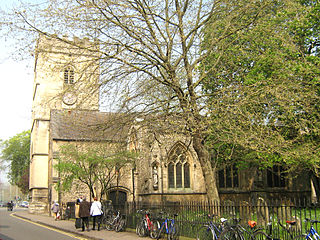
St Mary Magdalen is a Church of England parish church in Magdalen Street, Oxford, England, dedicated to Jesus' companion Mary Magdalene. It is one of the city's ancient parish churches and is a Grade I listed building.
30. St Aldate's Church
St Aldate's is a Church of England parish church in the centre of Oxford, in the Deanery and Diocese of Oxford. The church is on the street named St Aldate's, opposite Christ Church college and next door to Pembroke College. The church has a large congregation and has a staff team of about 30 which includes clergy, pastoral and administrative staff. The offices of the Rector and other members of staff are at 40 Pembroke Street.
31. South Park
South Park is a park on Headington Hill in east Oxford, England. It is the largest park within Oxford city limits. A good view of the city centre with its historic spires and towers of Oxford University can be obtained at the park's highest point, a favourite location for photographers.
32. St Giles' Church
St Giles' Church is a church in North Oxford, England. It is at the northern end of the wide thoroughfare of St Giles', at the point where it meets Woodstock Road and Banbury Road. It stands between where Little Clarendon Street joins Woodstock Road and Keble Road joins Banbury Road.
33. Rewley Abbey
The Cistercian Abbey of Rewley was an abbey in Oxford, England. It was founded in the 13th century by Edmund, 2nd Earl of Cornwall. Edmund's father, Richard, 1st Earl of Cornwall, founder of Hailes Abbey, had intended to establish a college or chantry of three secular priests to pray for his soul, but his son Edmund substituted 'six Cistercian monks, having more confidence in them'. If this was the original plan, it was soon enlarged. In 1280 he offered the general chapter of the Cistercian order to found a college (studium) for Cistercians at Oxford, and the chapter accepted the offer, and decreed that the college should have the same privileges as the college of St. Bernard at Paris, and that it should be under the Abbot of Thame, as the other was under the Abbot of Clairvaux. The following year the chapter decreed 'out of due respect to the Earl of Cornwall' that the Abbot of Thame should be empowered to appoint an Abbot of his own choice for the house of study at Oxford, and that there should be a daily memory of the late Earl of Cornwall at Mass at the college (studium) of Oxford, according as the Abbot of the place shall ordain.
34. St Peter's Chapel
The Church of St Peter-le-Bailey is a church on New Inn Hall Street in central Oxford, England. It was formerly next to Bonn Square, which was originally the churchyard. Now it is located halfway up New Inn Hall Street to the north. Several churches have existed on or close to the site. The current church is now the chapel of St Peter's College, Oxford.
35. Angel and Greyhound Meadow
Also known as Angel Meadow, the Angel & Greyhound Meadow is a flood-meadow adjoining the River Cherwell just north of Magdalen Bridge, Oxford, England and opposite Magdalen College. It derives its name from the old Angel and Greyhound coaching inns in the High Street, for which it served as a horse-pasture. There is now a pub named the Angel & Greyhound in St Clement's, an interesting example of an inn named after a meadow named after two inns.
36. Tirah Memorial
The Tirah Memorial is a war memorial in Bonn Square, Oxford, England. It commemorates soldiers of the 2nd Battalion Oxfordshire Light Infantry who died in 1897–98 on the Tirah Expedition and Punjab Frontier Campaign to suppress rebel tribes on the North West Frontier of British India.
37. Convocation House
Convocation House is the lower floor of the 1634–1637 westward addition to the University of Oxford's Bodleian Library and Divinity School in Oxford, England. It adjoins the Divinity School, which pre-dates it by just over two hundred years, and the Sheldonian Theatre, to its immediate north.
38. Wesley Memorial Church
Wesley Memorial Church is a Methodist church in central Oxford, England. John and Charles Wesley studied in Oxford, and the congregation was founded in 1783. The present church building was completed in 1878. The building is now a focus for various social activities as well as Christian worship.
39. St Frideswide's Church
St Frideswide's Church is a Church of England church on the south side of the Botley Road in New Osney, west Oxford, England. The church is in a district originally part of the parish of St Thomas the Martyr.
40. Oxfordshire and Buckinghamshire Light Infantry War Memorial
The Oxfordshire and Buckinghamshire Light Infantry War Memorial is a First World War memorial in the Cowley area of Oxford in southern England. Designed by Sir Edwin Lutyens, it commemorates men of the Oxfordshire and Buckinghamshire Light Infantry killed in the conflict; it was unveiled on Armistice Day, 11 November 1923, and has been a grade II listed building since 1972.
Wikipedia: Oxfordshire and Buckinghamshire Light Infantry War Memorial (EN)
41. Swan Bridge
Swan Bridge is a Grade II listed bridge over the Castle Mill Stream in the city of Oxford, England. It forms part of Paradise Street. The bridge is close to Oxford Castle to the north. Also to the north on the Castle Mill Stream is Quaking Bridge. To the south is a bridge for Oxpens Road.
Share
How likely are you to recommend us?
Disclaimer Please be aware of your surroundings and do not enter private property. We are not liable for any damages that occur during the tours.
